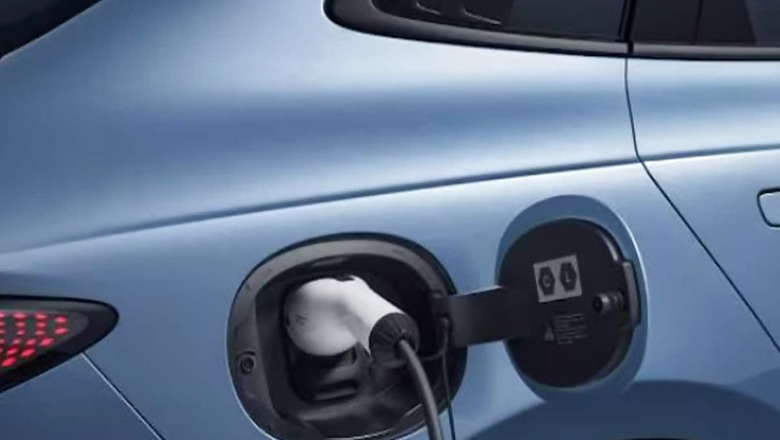
views
India’s electric vehicle (EV) market is experiencing a surge in popularity, with significant growth and ambitious goals for the future. While still in its early stages, the EV market is witnessing rapid growth. Sales figures indicate a jump from 1.25 lakh units in 2022 to over 10 lakh units in 2023, reflecting a nearly 9x increase.
The government is actively promoting EV adoption through various initiatives. This includes offering subsidies and tax breaks for EV buyers, investing in charging infrastructure, and setting ambitious targets for electrifying the transportation sector.
Experts feel India’s EV market is on an exciting trajectory. With continued government support, technological advancements, and increasing consumer awareness, electric vehicles are poised to play a major role in India’s future transportation landscape.
Nehal Gupta, managing director, Accelerated Money for U (AMU), shares how women are navigating the EV ecosystem.
Gupta says that encouraging more women to consider EVs involves addressing various factors, including financial benefits, environmental impact, and social perceptions.
Gupta shares some strategies to promote EV adoption among women;
“In my experience, strategies that can promote EV adoption among women include – launching educational campaigns that underscore the financial perks of owning EVs, such as low operating costs, savings of fuel and maintenance, and tax breaks. At the same time, we need active environmental awareness emphasising the impact of EVs in lowering greenhouse gas emissions, improving air quality, and potential contributions to fight climate change,” Gupta adds.
Women tend to be more receptive to sustainability and environmental concerns, so spreading awareness about EV’s positive impact on the planet can help garner their attention.
Marketing campaigns
In addition, developing targeted marketing campaigns that address women’s priorities and preferences regarding safety, comfort, reliability, and technology can appeal to their needs as consumers.
“In this regard, focusing on inclusive representation through advertisements can also encourage women to overcome perceived barriers and envision themselves as EV owners. Above all, offering financial incentives, tailored low-interest loans to women borrowers, and rebates can help make EVs more accessible and affordable,” Gupta adds.
Gupta underlines that to further support this vision, strategies like advocating for EV infrastructure in public places and communities can help riders overcome range anxiety and project the vehicle as a practical solution for women.
In addition, raising awareness by organising workshops and seminars to educate women about EVs, debunk common misconceptions, and walk them through the incentives can help them navigate the purchasing process and manage their vehicles more effectively.
“These strategies may help create a more inclusive environment that can encourage women to adopt EVs, contributing to the vision of sustainable mobility,” Gupta adds.
The potential of electric vehicles for women drivers
The role of EVs in contributing towards a cleaner environment through reduced carbon emission is something that can often strike a chord with women who want to contribute more actively towards supporting the nation’s net zero carbon emission goals.
Besides this, the new-age EVs are loaded with advanced features that prioritise safety and driving experience. This further adds to the appeal, making EVs a practical choice for those who seek comfort and safety.
“Tech-savvy women who are counted among the early adopters can expect to witness and experience the cutting-edge features of EVs as the vehicles are spearheading advanced automotive technology,” Gupta adds.
Additionally, the potential cost savings on EVs compared to the fuel-drawn alternatives and relatively lower maintenance charges could enable budget-conscious women to save more on their commute and mobilise savings in the long run.
“I believe they would also appreciate the feature of home charging more than others, as with technological advancements in charging infrastructure, the notion of charging EVs at home over a shorter duration is becoming more feasible. The widespread adoption of the feature would eliminate the need for riding to charging hubs, making the process more convenient for women,” Gupta highlights.
Advice when making a switch to an electric car
Gupta suggests for those considering a switch to EVs would be to learn more about the vehicle first and how to maintain it to ensure a smooth transition.
“To begin with, start to explore different EV models and check out their features and their limitations before making any decision. Simultaneously, assess your driving needs by factoring in the daily commute distance, identifying the driving patterns, and more importantly, the availability of charging infrastructure. Once you narrow down your choices, ensure to experience their performance, handling, and level of comfort through test drives,” Gupta adds.
Charging setup is important
Familiarise yourself with different charging setups, including home charging, public setups, and fast charging networks. Next, make sure to compute the total cost you will incur for purchasing an EV, but do not forget to account for potential maintenance expenses, incentives, and fuel savings.
In case you plan to take out a loan to purchase an EV, factor in the loan interest and EMIs as well to understand the financial implications of owning the vehicle. Lastly, always stay updated with the technological advancements and government policies centred around EVs to avail the perks of owning an EV.




















Comments
0 comment